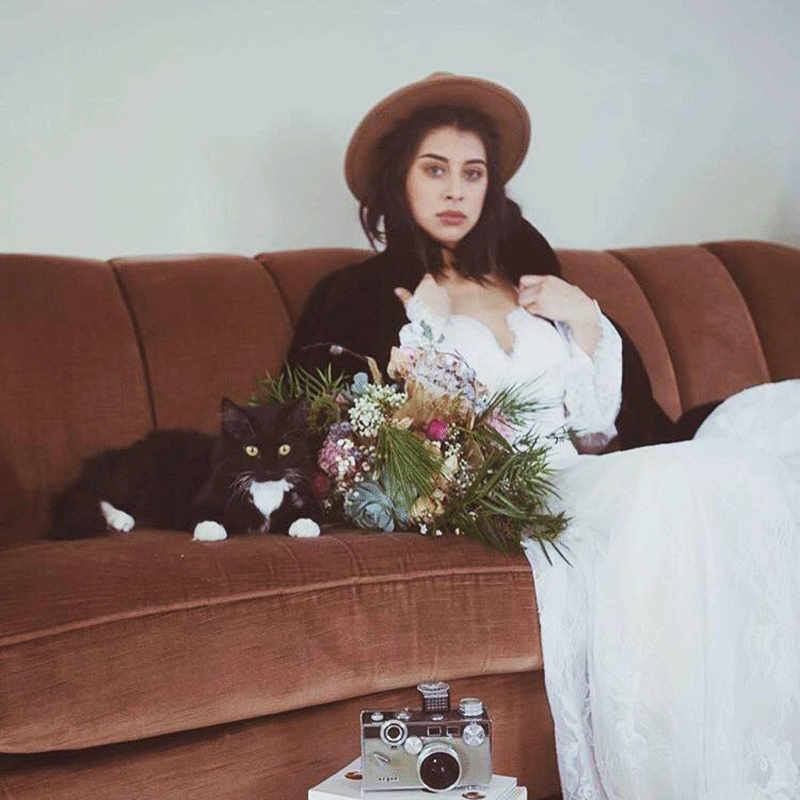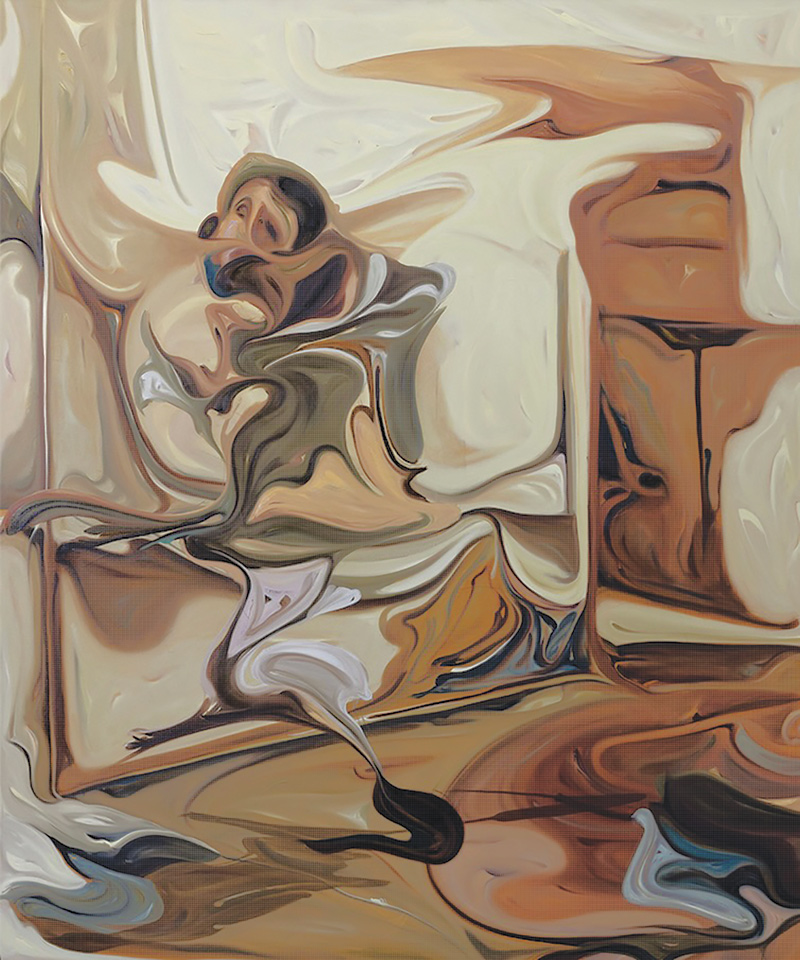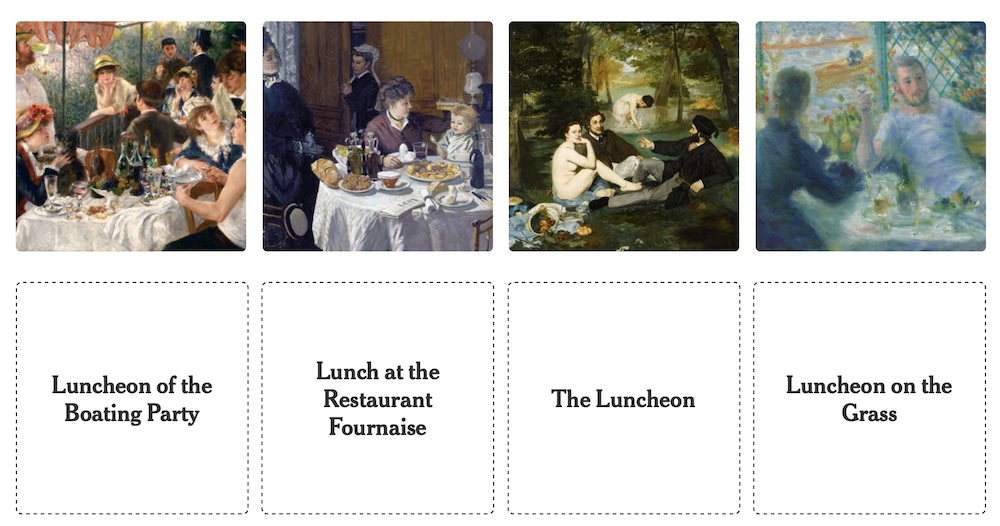Life After Art School: Making Transitions and Transactions – Part II

Life After Art School is an interview series by a former CGN Intern. The first part was written in 2014.
This five-year follow-up is broken up into three parts:
• Life After Art School: Five Years Later
• Life After Art School: Making Transitions and Transactions – Part I
• Life After Art School: Making Transitions and Transactions – Part II (included below)
By MEGAN BONKE
As was the case when I wrote the first Life After Art School article for CGN in 2014, I talked to other artists to get their perspectives.
My first follow-up interview was with French artist David Twose (read here).
I tried my best not to shy away from questions about financial challenges, and I hope my own story as well as the thoughts and answers from another artist helps others move closer to an understanding of life as a professional artist.
My second interview is with a current art student, Wendolyn Sterkel, who has also taken a leap, switching from a traditional, public university to attending art school. Sterkel, originally from Omaha, Nebraska, is the first in her family to go to college. She is currently a student at the School of the Art Institute of Chicago (SAIC).

Wendolyn Sterkel, 22, current student at SAIC
Megan Bonke: When did you decide you wanted to be an artist?
Wendolyn Sterkel: About three years ago I was at community college. I was just about to transfer over the University of Nebraska Lincoln, and I had switched my major from journalism my first year to business my second year, and finally my advisor came up to me and said, “You need to pick a major before you get into the university.” At the time I had taken maybe two art classes — just very basic curriculum kind of stuff — and I said to him, “You know, I’m going to do art.” He responded, “Wendy you’ve only taken two art classes and those were the basic ones.” I said, “Yeah I think I’m just going to do art.” He said, “Are you sure? This is a really big commitment here.” And I said, “Just put down art. We’ll figure it out.”
And from there I’ve stuck with it. Choosing my major was really spontaneous for me.
MB: Were you interested in art when you were younger?
WS: I was on and off, and my mom always told me that it seemed like a hobby. She encouraged me to get more into writing. My mom said, “Look you can be a journalist and actually make money and have a career.” I tried it, and I think after doing it for so long, I got tired of it. But I’ve always had an interest in art.
MB: What are you currently studying?
WS: I’m getting my Bachelor in Fine Art at SAIC, focusing primarily in sculpture, such as ceramics. I love to work with clay.
MB: How many years have to been in college?
WS: Five.
MB: How many years do you have left?
WS: Hopefully one, maybe one and a half, but at least one.
MB: When did you switch to SAIC? How many years did you have under your belt?
WS: I had four. So this is my first year, and currently my second semester, at SAIC. I spent two years at community college, followed by two years at the University of Nebraska Lincoln, and I should have two total at SAIC.
MB: What has been the greatest lesson learned from school/art school?
WS: I don’t know if I’ve learned anything so far...
MB: That’s a lesson too.
WS: It really is about real world knowledge. You can go to school, ace all of your classes, but in the end if you don’t have the experience, it’s not going to get your anywhere. You may have a degree, but if you don’t have jobs, it’s not going to work.
MB: Do you think anything critical is missing from your curriculum?
WS: Oh yeah. I wish there was a class on how to be an artist out in the real world, for instance, how do I figure out how to write cover letters and artist descriptions. At least to my knowledge there is no class that teaches you solely how to sell your art or how to be a successful artist out in the real world. That’s the big one. They do teach you how to work, conceptually, but in the end that may not sell your art all the time.
MB: But you are going to art school. What do you hope to learn while you’re there?
WS: I just really hope I can learn how to actually make it out in the real world. I guess I want to learn how I could do what I want to do and make a living out of it. That would be amazing. I hope school will teach me that. I’ve had to hustle so far, and it seems like my jobs outside of school have taught me that better.
MB: What kinds of subsidies/benefits/scholarships have you received for school?
WS: I have received multiple grants that I’ve had to apply for through university, SAIC, and community college. I have FAFSA. I also have smaller scholarships through the school or third parties and a bunch of loans: a lot of the subsidized and unsubsidized loans.
MB: So what percentage is covered by scholarships and grants and how much is covered by loans?
WS: I’d say about 15-20% are scholarships and grants that I don’t have to pay back. Then I’d say FAFSA and the loans pay for 70%.
MB: So what has been involved in applying for these subsidies/benefits/scholarships?
WS: Every year I have to apply for the FASFA. That’s means gathering my mother’s taxes and my taxes and filling out this these very extensive forms to ultimately show, 'Hey we’re still not making any money. I still need to borrow money from you guys.' That’s been a hassle, because my mom doesn’t know how to do it. I’m the first generation (first person) to go to college in family. My mom had no idea how to deal with this. So going into my freshman year of college, I had to figure that all out. Now it’s become more routine. I still have to make sure I meet regular deadlines, which is very stressful when I have to get all her tax stuff and all my stuff kind of synchronized. It’s a lot.
MB: Specifically what kind of financial burdens have you noticed since becoming an art student?
WS: Supplies. I understand they can’t always supply us. When it comes down to it and you’re trying to make a project and use good material, so it will look decent, you’re going to have to spend the money. I think the most I’ve ever spent in one class was about $300-$400. And unfortunately those were supplies I never had to use again. I spent $200 on paint, which did not include the canvas or the stretchers or brushes or the paint thinner. Then you run out, and they expect you to have more and more and more money for more materials. I’ve spend $300-$400 on a class easily. It can be a big waste. It sucks because I’ve tried to sell it back to other students, and I end up kind of giving it away.
MB: What about living in the city of Chicago?
WS: In Nebraska, I was able to have a part time job, go to school, have a social life, and still be able to pay my bills on time. That was easy. As you continue with any school, you have to put in more hours, you get a lot more schoolwork, and you have less time to work a job outside of school. I’m currently in the dorms. I had to take out more loans to afford that so I wouldn’t have to be stressed my first year of Chicago and fail out. Looking at next year, my friends want to move in together. Luckily my roommate, who I’m actually going to move in with next year, her mother is a real estate agent. She is going to buy a condo and rent it out to us. Still rent is going to be $800 to $1000 a month. It’s going to be really hard, and I’m stressed out. I’ve been trying to figure out a job that will correlate with school and still leave me time for projects, which are going to become way more intense. I told my roommates if we could pay $600, I would be the happiest person ever. My roommates are able to work full time jobs, and I’m the only student. Luckily they are able to work with me, and I think that we’ll be able to come to a middle ground.
MB: What do you do to currently manage your finances?
WS: I do promo modeling during the summer. Essentially, I get booked for a gig, they train me for 15 minutes, and I have to be on my feet eight to ten hours at a time; but I get paid $30-40 an hour which is amazing. I love it. I did it in Nebraska, and that’s how I would make my money in the summer. Currently, I have two jobs. I work for Color Cocktail Factory and I work for community center in Homan Square, which is only once a week. I’m hoping I can either I can pick up more shifts during the summer, or worse comes to worst, I will apply for a bar job somewhere. I usually will work about two to three jobs during the summer to save up so I won't be as stressed when school starts.
MB: How many hours do you work during the school year?
WS: During the school year, 15–20, and that’s really pushing it. I like to keep it fewer than 15 if that is physically possible. Not having to pay bills or rent right now is really easy. Once I get into an apartment, I’m worried about how I’m going to manage those hours and pay bills and find time to work on projects.
MB: Do think it’s more challenging for you than other students?
WS: Some students are able to take their schoolwork with them to work. There was a time I was the assistant manager at a bar, and when it was slow I would allow the servers to work on their homework. They would write their papers and do their homework on their computers. I can’t take my stuff anywhere. I can’t come in with a bag of clay and start molding any of my projects on the bar counter or lug around my welding stuff. It really does depend on your medium.
MB: Do you think your workload is fair?
WS: Back in Nebraska, I was the only art student amongst all my friends. They were communications, marketing, and psych majors and during finals week they maybe studied three or four hours and call it good. I would be in my room all night working on a project. Because I had projects due or critiques, I would stay in the studio until three in the morning for four nights straight. You have to put the time in because you can physically see what you did. You need 30 maybe 40 hours for a really solid project. It seems unfair, but it’s the life I chose.
MB: So what are you currently working on?
WS: Artistically — like nothing at all. The only studio class I’m taking right now is designed objects. At the moment, I’m trying to get my art history out of the way. I was also missing a science credit because they didn’t accept my science credit from my community college. I am taking a 400 level sculpture class “Just for Justice”, but it’s a conceptual, activist class. At the end of the year we have to have ten pictures of a project that we would do. We’re not actually making anything. We have to plan a community project to address a controversial issue, which I am very interested in doing, but I am more of a physical person. I got into the class thinking it would be more physical, and I was a bit disappointed to see that it wasn’t. But I’ll learn something, and maybe I can bring it into my own work and create a piece from it.
MB: So what are some of your biggest fears and concerns after you graduate?
WS: Oh God. Here is the panic attack coming.
I would love to teach for a while. I don’t want to get stuck. I know teachers right now are getting paid very little and they are mistreated horribly. They are the starting point of everything for kids…our future.
I would love to be able to actually sell my art. I would to like to see if I could sell it and make a living off of it, but at the same time the art community seems is very exclusive and you really need to know the right people. That’s my biggest fear, that I won’t actually be able to do that. But I love teaching; I really do. I love working with children so much. In the end if that’s my fall back, I think I’ll be content.
MB: What do you plan to do for your first year after school?
WS: I’d like to teach a little bit and then go back to grad school. That opens up a lot, and I could teach college classes. Grad school is definitely on my list, but I think that I need a break from six years of school and only having a Bachelors Degree. I need a break before people are asking me if I am doctor or something.
MB: Do you have any bigger future plans?
WS: No, actually. I’ve never had a future plan on what I even wanted to do. I changed my major three times. I’m not even sure what I’m going to do with this. It makes me horribly stressed, but it also makes me very happy. I know I haven’t hated my life since doing it. In the end, money is money. It comes and it goes, but I’m doing something I like, and I’m paying for all of this out of my own pocket. I’m not putting any strain on my family, which is really a nice feeling. I’m just going to keep going and see what happens.






